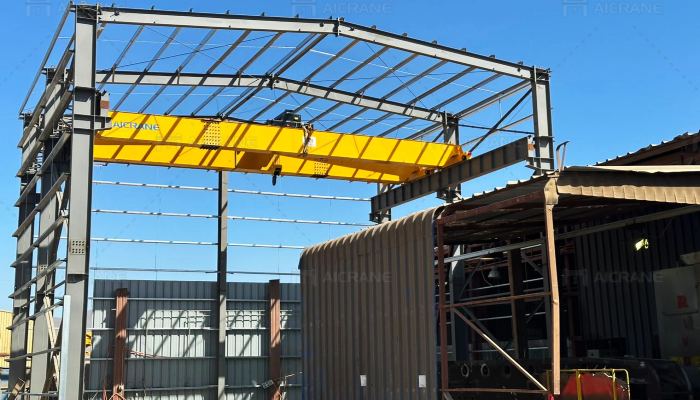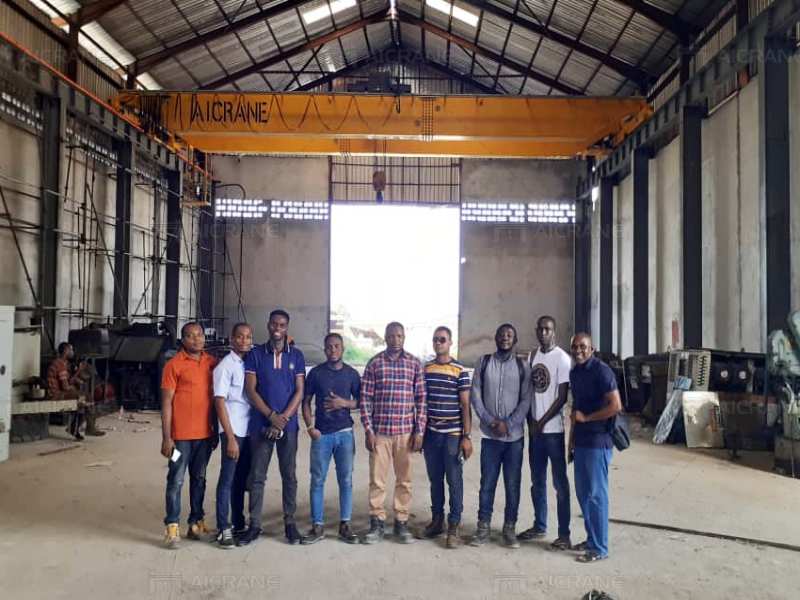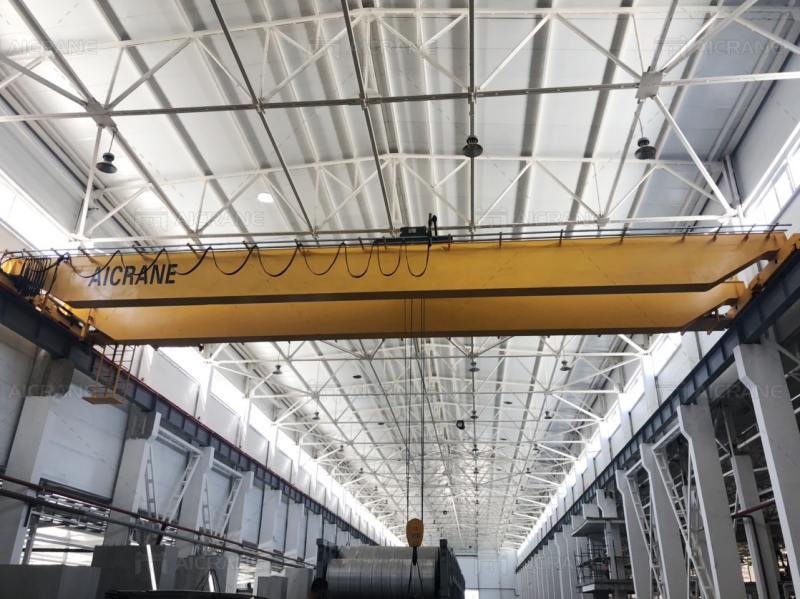Overhead cranes are integral to industries requiring heavy lifting, such as manufacturing, construction, and logistics. The lifecycle of a 30 ton overhead crane encompasses distinct phases, from manufacturing and installation to operational use and eventual disposal. Each phase impacts the environment, cost, and operational efficiency, making lifecycle analysis essential for informed decision-making.

Manufacturing Phase
The lifecycle of an overhead crane 30 ton begins with the manufacturing process, involving material extraction, component fabrication, and assembly.
- Material Selection:Primary Materials: Steel is the primary material used due to its strength and durability. Other materials include aluminum for lightweight components and composites for specialized applications. Environmental Impact: Mining and processing of raw materials contribute significantly to the crane’s carbon footprint. Sustainable sourcing and recycling of materials can mitigate this.
- Component Fabrication:Key components include the bridge, hoist, trolley, and motor systems. Each requires precise engineering to meet operational and safety standards. Advanced manufacturing technologies, such as CNC machining and robotic welding, ensure high-quality production while reducing waste.
- Assembly and Testing:Components are assembled in controlled environments to ensure structural integrity and performance. Rigorous testing, including load tests and safety inspections, validates the crane’s compliance with industry standards.
Installation and Commissioning Phase
Once manufactured, the eot overhead crane is transported to the site for installation and commissioning.
- Site Preparation:The installation site is assessed for structural compatibility, including foundation strength and spatial requirements.
- Installation Process:The crane’s components are assembled on-site using heavy equipment. Proper alignment and calibration are critical.
- Commissioning:Final checks include electrical wiring, load testing, and control system integration. A detailed inspection ensures the industrial overhead crane is ready for operational use.

Operational Phase
The operational phase is the longest in the crane’s lifecycle, typically spanning 20 to 30 years with proper maintenance.
- Usage:A 30 ton overhead crane is used for lifting, transporting, and positioning heavy loads in industrial settings. Efficient operation reduces wear and tear.
- Maintenance:Routine inspections and maintenance are essential to prolong the crane’s life. Key activities include lubrication, replacing worn parts, and calibrating systems. Predictive maintenance, enabled by IoT sensors, minimizes downtime by addressing issues before they escalate.
- Upgrades and Retrofits:Over time, technological advancements may necessitate upgrades to improve performance and safety. Common upgrades include new control systems, enhanced safety features, and energy-efficient motors.
End-of-Life Phase
When the crane reaches the end of its operational life, proper disposal or recycling is crucial to minimize environmental impact.
- Decommissioning:The crane is carefully dismantled to ensure safety and recover valuable components. Hazardous materials, such as lubricants and electrical components, are handled according to environmental regulations.
- Recycling:Steel and other metals are highly recyclable, contributing to a circular economy. Recycling reduces the demand for virgin materials and lowers the environmental footprint. Non-recyclable components are disposed of responsibly to prevent environmental harm.
- Repurposing:Some parts, such as motors and control systems, may be refurbished and reused in other machinery, extending their lifecycle.

Environmental Considerations
Lifecycle analysis highlights several environmental impacts and opportunities for sustainability:
- Carbon Footprint:The manufacturing phase contributes the most to greenhouse gas emissions, followed by transportation and operational energy consumption. Using renewable energy during production and operation can significantly reduce emissions.
- Energy Efficiency:Modern 30 ton cranes incorporate energy-saving technologies, such as regenerative braking, which converts kinetic energy into reusable electricity.
- Waste Reduction:Implementing lean manufacturing techniques minimizes waste during production. At the end of life, recycling ensures minimal landfill contributions.
Economic Analysis
From a financial perspective, the total cost of ownership (TCO) of a 30ton double beam overhead crane includes initial investment, operational costs, and end-of-life expenses.
- Initial Investment:The manufacturing and installation phases account for the majority of upfront costs. Investing in high-quality materials and components ensures longevity and reliability.
- Operational Costs:Maintenance, energy consumption, and potential upgrades are ongoing expenses. Predictive maintenance and energy-efficient technologies can lower these costs.
- Resale and Recycling Value:At the end of its lifecycle, a well-maintained crane retains value through resale of parts or scrap materials. This offsets disposal costs.
Future Trends in Lifecycle Management
- Digital Twin Technology:Digital twins create a virtual replica of the crane, enabling real-time monitoring and simulation. This technology improves maintenance planning and extends the crane’s lifecycle.
- Sustainable Materials:Innovations in materials science are driving the development of lightweight, durable, and eco-friendly materials for crane manufacturing.
- Circular Economy Models:The crane industry is moving toward circular economy models, focusing on refurbishing and reusing components to reduce waste and conserve resources.
Conclusion
The lifecycle of a 30 ton overhead crane reflects a complex interplay of engineering, environmental, and economic factors. By adopting sustainable practices across manufacturing, operation, and disposal, industries can maximize the crane’s value while minimizing its environmental impact. As technology and sustainability initiatives continue to evolve, lifecycle management will play a pivotal role in shaping the future of heavy lifting solutions.